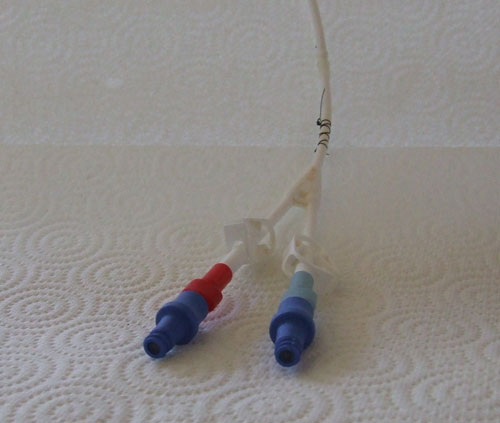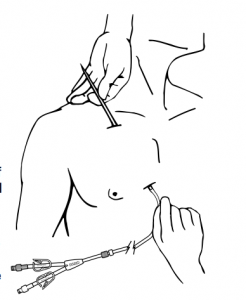From an Ohio State University Press Release
http://researchnews.osu.edu/archive/yangvegf.htm
COLUMBUS, Ohio – Researchers here have shown that in cell cultures, the stress hormone norepinephrine appears to promote the biochemical signals that stimulate certain tumor cells to grow and spread.
The finding, if verified, may suggest a way of slowing the progression and spread of some cancers enough so that conventional chemotherapeutic treatments would have a better chance to work. Eric Yang Ronald Glaser
The study also showed that stress hormones may play a completely different role in cancer development than researchers had once thought.
The results appear in the current issue of the journal Brain, Behavior and Immunity.
“We would not be surprised if we see similar effects of norepinephrine on tumor progression in several different forms of cancer,” explained Eric Yang, first author of the paper and a research scientist with the Institute for Behavioral Medicine Research (IBMR) at Ohio State University.
Yang and colleague Ron Glaser, a professor of molecular virology, immunology and medical genetics, last year showed that the stress hormone norepinephrine was able to increase the production of proteins in cultures of nasopharyngeal carcinoma tumor cells that can foster the aggressive spread of the disease, a process known as metastasis. Glaser is director of the IBMR and a member of the Comprehensive Cancer Center at Ohio State.
In this latest study, the researchers looked at a different type of cancer – multiple myeloma. One of several types of cancers of the blood, multiple myeloma strikes nearly 20,000 Americans each year, killing at least half that many annually. Patients diagnosed with this disease normally survive only three to four years with conventional treatments.
Yang and Glaser focused on three multiple myeloma tumor cell lines, each representing a different stage in the life of the disease, for their experiments. While all three tumor cell lines reacted to the presence of norepinephrine, only one, a cell line known as FLAM-76, responded strongly to the hormone. “The fact that this one cell line, of the three multiple myeloma cell lines studied, closely represents the early stages of the tumor, and that this is where we see the biggest effect, is what makes this work more clinically relevant.”
The norepinephrine binds to receptors on the surface of the cells, sending a signal to the nucleus to produce a compound known as VEGF — vascular endothelial growth factor – that is key to the formation of new blood vessels, which the tumor must have to grow.
The FLAM-76 cell line was prepared from multiple myeloma tumor cells taken from a patient whose disease had not yet progressed too far from its original site in the bone marrow where blood cells are formed.
“It turns out that FLAM-76 tumor cells more closely represent the earlier stages of the disease when blood vessel formation, a process called angiogenesis, is needed for disease progression,” Yang said.
“The fact that this one cell line, of the three multiple myeloma cell lines studied, closely represents the early stages of the tumor, and that this is where we see the biggest effect, is what makes this work more clinically relevant,” Glaser said.
The researchers believe that blocking these receptors would slow the process of the growth of more blood vessel to the tumor, delaying disease progression and perhaps allowing treatments to be more effective. Widely used “beta-blocker” drugs now prescribed for high blood pressure work by blocking these same particular cell surface receptors, Yang said.
“This approach wouldn’t kill the tumor cells but it would diminish the blood supply to the tumor cells and slow them down, and that could translate into a longer and better quality of life for the patient,” Glaser said.
The researchers and their colleagues are now working with other forms of cancer to test the effects of stress hormones like norepinephrine on their growth.
Glaser added that these kinds of results may change the way scientists are looking at a link between stress and the development and spread of cancer. In the past, he said, the focus was on how stress hormones weakened the immune system, allowing certain tumors to evade the body’s defenses.
“Now we have these stress hormones, not only affecting the immune response, but also acting directly on the tumor cells and inducing changes in the molecules made by those same tumor cells,” Glaser said.
“This has important implications for the spread of the tumor and metastasis.”
Elise Donovan, a researcher with the IBMR, and Don Benson, a researcher with Ohio State’s Comprehensive Cancer Center, also worked on the project. The research was funded in part by the National Cancer Institute.
#
Contact: Eric Yang, (614) 292-0364; yang.3@osu.edu or Ron Glaser, (614) 292-5526; glaser.1@osu.edu.
Written by Earle Holland, (614) 292-8384; Holland.8@osu.edu.



